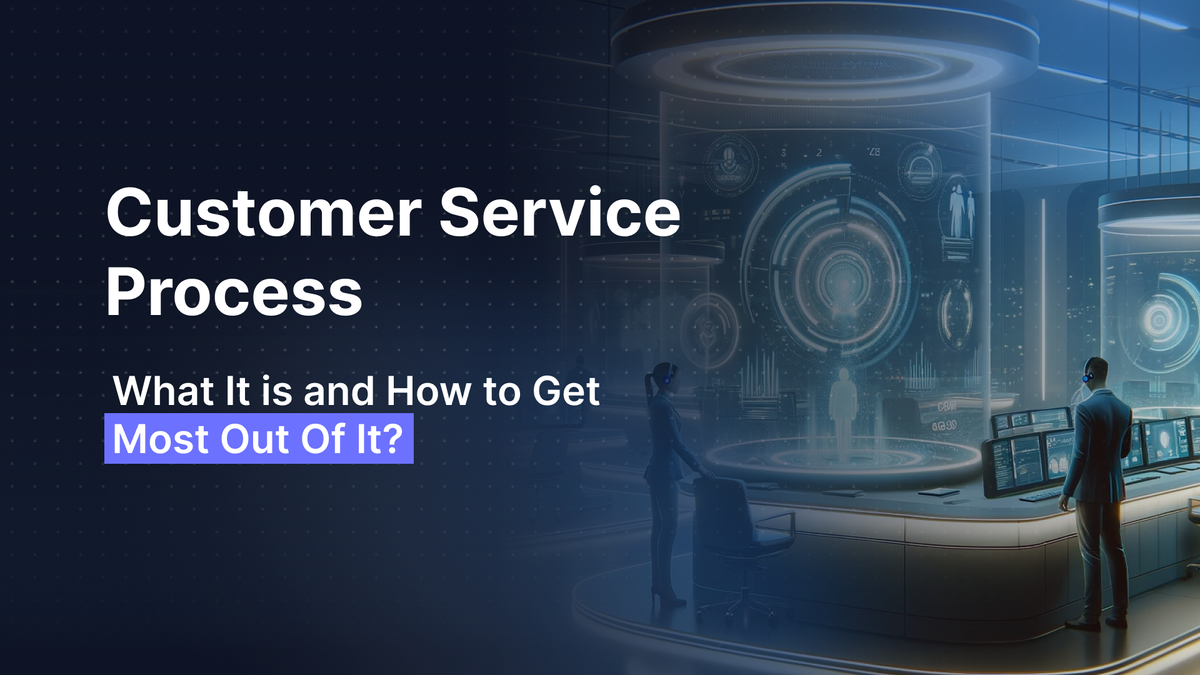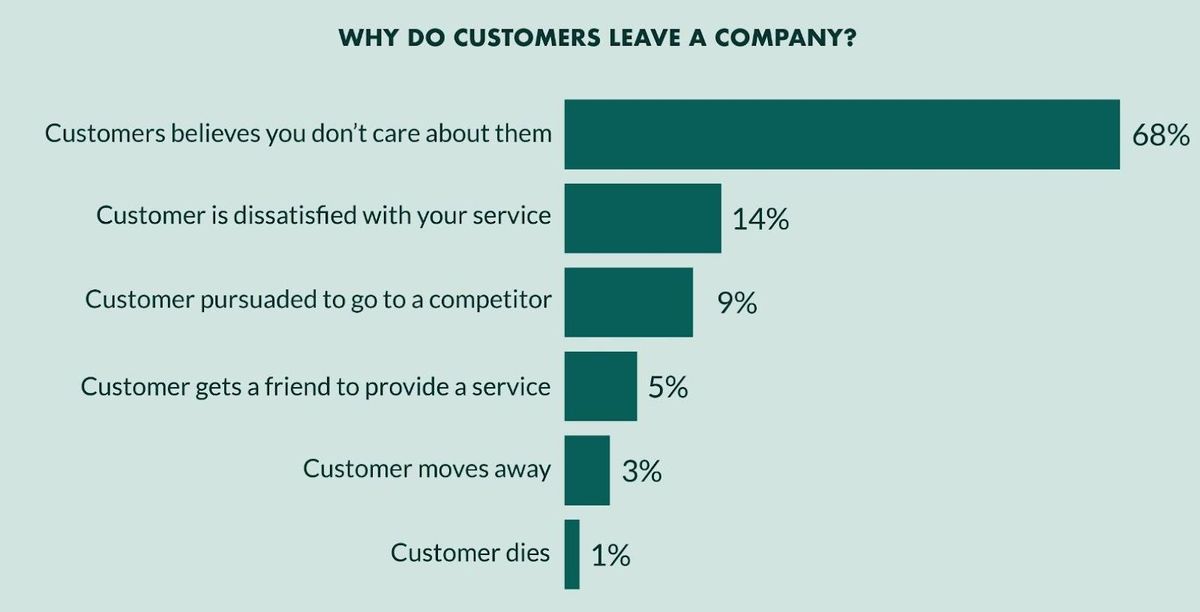Not finding a perfect way to organize your customer support? Well, read this ...

The online marketplace is becoming more competitive than ever. Customers expect a seamless and positive experience in every interaction with a business. With so many choices available, only a structured and organized customer service process can help you retain customers, build trust, and get ahead of your competitors.
High-quality customer service leaves your customers happy, and they are more likely to recommend your business to others. Let's see how you can establish customer service procedures that help your business grow and thrive.
The customer service process is the guidance or assistance provided by businesses to their customers from the first contact to the post-purchasing support. This usually revolves around handling customer queries and complaints, providing helpful information, and taking feedback. While every business has its unique SOPs, a regular customer service process may look like this:
The above workflow outlines the typical steps of how basic customer service works in most businesses.
Hiccups, mishaps, and complaints are a regular part of any business, even the most thriving ones. A well-defined customer service process makes sure that your customers are heard, valued, and compensated adequately.
Research indicates that 91% of customers are more likely to make repeat purchases with a business after positive customer service. This means that strong customer service can help you transform difficult situations into opportunities and build brand loyalty.

Having an effective customer system in place allows your support staff to provide a consistent level of service to your customers. It shows that you care about your customers and are genuinely interested in their well-being.
So, the customer service process doesn't stop at resolving issues but goes beyond making strong relationships and brand advocacy.
A successful customer service process is built on well-defined goals and objectives with careful planning. This may vary according to your niche or industry. Here are the four steps to design effective customer service.
Before creating anything new from scratch, it's good to evaluate your existing customer service process. This will help you decide if it needs a complete overhaul or just some tweaks and adjustments. Here are some key questions to consider before redesigning your approach:
For a successful implementation, set clear performance goals about what you want to achieve with your customer service process. There are different customer service KPIs that you can use to evaluate your performance and areas of improvement. The KPIs may vary for different businesses, but these are some of the most commonly used by companies.
Your customer support staff is the frontline of your business. They are the human face of your brand, and their interactions directly impact customers' perceptions. Remember, 68% of customers leave a company because they believe you don't care about them. Train your staff to work with a customer-centric approach such as:
This customer-centric approach encourages positive experiences and leads to increased customer satisfaction.

You don't need a high budget or a massive team to create successful customer service. All of this can be done with a handful of professionals and the right set of tools, such as:
Customers today don't have the time and patience to wait for hours for a resolution. A systemized customer care process helps you provide proactive and speedy support to your customers. AI automation can help you provide assistance that is not bounded by working hours or time zones.
Chatbots also help you analyze trends and gather customer feedback on what customers think about their interactions and what areas of improvement you are looking for. This, combined with human intervention and timely communication, can help you provide an exceptional customer experience.
A well-thought-out customer service process provides a long-term roadmap of how things should work out within a system. It helps your support staff with pre-defined guidelines about dealing with challenging situations and finding the best possible solutions.
The use of AI automation frees your human employees from repetitive tasks. With less work routine, they can focus more on their communication, product knowledge, and problem-solving skills. This type of customer service not only makes your customers happy but also empowers your employees to generate more revenue.
No two customers are alike or have the same needs. Tailoring the experience to each customer is a great way of practicing good customer service. 61% of people want brands to tailor experiences based on their preferences. Pay close attention to what your customers are trying to communicate.
AI support could be of great help to collect valuable customer data. What are your customers' past purchases, preferences, issues, and previous interactions? All of these are within your reach. Take help from this data to provide personalized support to your customers.
A systemized and proactive customer service process is essential for any business that wants to thrive among its competitors. It improves customer satisfaction, builds brand loyalty, and empowers your customer service representatives to deliver an exceptional customer experience.
Using AI support can help you enhance and speed up your customer service. AI chatbot customer service helps you to provide 24/7 customer support with fast and personalized solutions. You can also upgrade your customer support with Aidbase. For more comprehensive AI-powered customer support, visit https://www.aidbase.ai/ to learn more about our services.